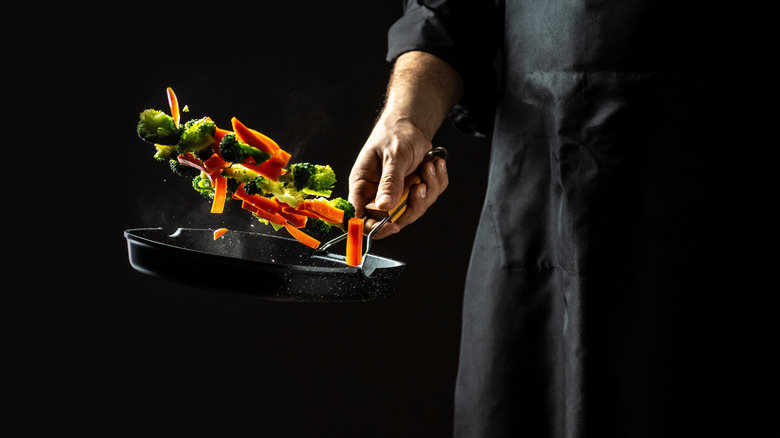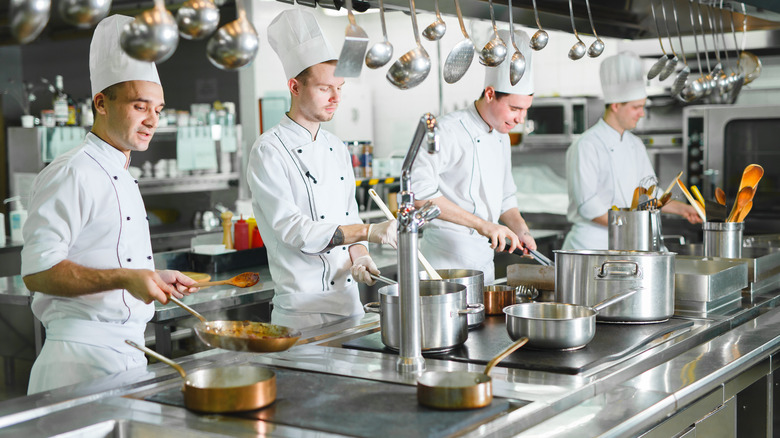Shaking Is More Important Than You Think When Sauteeing Your Food
Sautéing as a popular method of cooking because it's quick, easy, and even a little fun. With a saute pan and some basic kitchen know-how, you can pretty much cook everything and anything under the sun, from spinach and mushrooms to chicken and salmon. Plus, it's reminiscent of all those cooking shows we all grew up with. Sautéing makes us think, feel, and even look like real chefs in our home kitchens.
The characteristic shaking or tossing the ingredients being cooked in a pan over the stove is the image most commonly associated with sautéing. It all comes down to efficiency and technique. And, of course, a little restraint is key.
Look, no one's saying you need to do the chicken dance while sautéing your onions. A little shake goes a long way. The idea behind this jostling motion is to ensure even cooking and searing. Too much shaking and you risk not browning the food enough on each side. You want the right amount of heat to actually be transferred to the food you're cooking. On the other hand, too little shaking and you'll burn through whatever you're cooking, which is really not what you're going for with a sauté.
Sauteeing is all about balance
At first glance, tossing your food in a pan looks like the kind of thing just about anyone can do. While that eventually may be true for you, it doesn't hurt to familiarize yourself with the right technique and practice a little before you make a small mess in the kitchen. Essentially, sautéing is two motions that merge into one seamless act. You want to give the food you're cooking a bit of shake or stir before starting to make sure it isn't going to stick to the bottom of the pan and then, lift it, so the pan hovers at a downward angle away from you.
Finally, it's time for the shake, toss, and sauté. In one expert motion, flick the pan with a downward thrust away from you and as the food reaches a slight airborne status, you bring the pan back towards you. And with all similarly adept sleights of hand, it really is all in the wrist. When you're done, make sure you take proper care of that frying pan so it's ready for your next chef session.
At the end of the day, a little goes a long way. "Amateur cooks tend to shake their pans a lot because they see chefs doing that on TV," chef Ben Daitz told PureWow, noting that this can actually stop the caramelization process. You want just the right amount of shaking and tossing to get to that optimal cook on every side of your ingredients.

